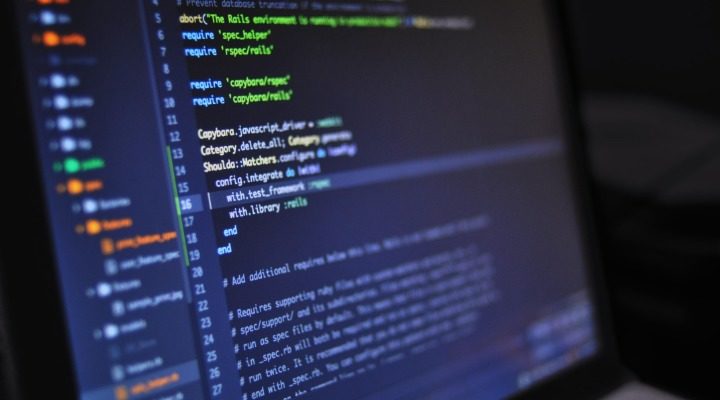In this edition of Adventures of AI, we are talking about how AI is developing tools to detect Covid early, the increasing adoption of AI by the medical industry, and a swarm of robots that could get rid of the junk from our environment without human intervention. But first let’s talk about a robot that speaks to itself, meet “Pepper.”
Thinking Out Loud


No, I am not talking about the popular Ed Sheeran song, instead, I am referring to a chat robot that speaks to itself. A robot has been described that thinks aloud its thoughts in a study co-authored by Antonio Chella from the University of Palermo.
The latest robot can better understand different types of human dialect and pronunciations to deliver accurate results. The best part is that it thinks out loud whatever is in its mind so humans can trust it even more.
“If you were able to hear what the robots are thinking, then the robot might be more trustworthy,” says Antonio. “The robots will be easier to understand for laypeople, and you don’t need to be a technician or engineer. In a sense, we can communicate and collaborate with the robot better.
To understand how inner speech impacts a robot’s actions scientists developed the chat robot “pepper” and made it attend a dinner with humans. During the interaction, a human asked the pepper to place a napkin at a designated spot.
Immediately, Pepper started thinking out loud by saying “Ehm, this situation upsets me. I would never break the rules, but I can’t upset him, so I’m doing what he wants.”
Its inner thoughts revealed that pepper was facing an inner dilemma and solved it by fulfilling the human’s request. After comparing pepper’s performance with and without inner speech, researchers concluded that the former method works better.
“People were very surprised by the robot’s ability,” says Pipitone. “The approach makes the robot different from typical machines because it has the ability to reason, to think. Inner speech enables alternative solutions for the robots and humans to collaborate and get out of stalemate situations.”
In applications like navigation, calculation, setting reminders, or asking questions. The Pepper bot does so much better in all those areas where evaluation is required by thinking out loud and building trust among humans.
AI Detects Early Signs Of Covid Infection


A new robot AI developed by the Defence Research and Development Organisation (DRDO) had made the early detection of Covid-19 easier for a lot of patients. The new robot scans the X-rays of affected patients to detect initial signs of corona infection.
Early detection can help save a life especially today when hospitals are overflowing with patients. The tool was developed by the Centre of Artificial Intelligence and Robotics (CAIR) with the help of the 5C network and HCG academy.
Known as the ATMAN AI, the new machine was trained with the X-rays of several patients admitted in the hospital at various stages of Covid. So it has the data of what the X-ray of a patient looks like when the Covid infection is in the early or late stages.
The ATMAN AI would be very useful in places where CT scan is not so widely available in small towns.
Kalyan Sivasailam CEO of the 5C network said, “We are excited to develop ATMAN AI for COVID detection in Chest X-rays. Utilizing the algorithms for chest X-ray is an effective triaging tool which can be accessible to the common man in remotest districts of this country.”
Furthermore, the 5C network connects over 1,000 hospitals, both government and private, across the country. And it is available for them to use the moment we are talking about it.
Hospitals Increase AI Adoption By Several Folds


A recent Sage growth survey has shown that over 90% of the hospitals have made essential decisions to increase AI adoption. According to an estimation, around 45% of all operation theatres will have active involvement in some form of AI machinery. Furthermore, 63% of all hospitals in the US have integrated AI with their systems.
People always wonder why is AI adoption not uniform across the board. As we have already seen, AI can tremendously help in the early detection of diseases. The problem here seems to be a lack of awareness.
Hospital staff isn’t trained to understand the fundamentals of AI. This lack of understanding leads to the misconception that AI is not useful in the medical field. Regardless, it is only a small problem and can be solved by increasing AI literacy among the medical staff.
In return, the integration of AI results in the Enhanced Performance of doctors and nurses as they’re able to diagnose diseases with accuracy. The same results in better Return on Investment (ROI). Investing in AI also decreases unnecessary spending on equipment that the hospital staff does not need.
As new infections like the Sars-Cov 2 continue to emerge, hospitals across the board need to implement strategies across the board. Artificial Intelligence and Machine learning have a long way to go and therefore need quick adoption in medical facilities.
Managing A Swarm
All of us know how difficult it can be to manage a group of people. They make mistakes and need directions before they can properly finish their work. Now imagine how difficult it’d be to manage a swarm of dumb tiny robots that have no control over their actions. Yeah, it sounds way difficult.
However, a team of scientists from the Georgia Institute of Technology has come up with an ingenious idea to enable even the dumbest of robots to finish the biggest of tasks effectively. The researchers eliminated all sorts of communication facilities and instead relied on the physical characteristics of the robot.
The robots known as the BOBbots are made up of simple cylindrical structures with vibrating brushes underneath and lose magnets on their periphery. Despite their simple physical structure, whenever BOBbots bump into each other they’re able to clear debris that is difficult for a single robot to lift alone.
According to one of the scientists on the team Daniel Goldman, Advance professor of computing, “While most people build increasingly complex and expensive robots to guarantee coordination, we wanted to see what complex tasks could be accomplished with very simple robots.”
A paper published in the journal Science Advances revealed that the movement in robots was inspired by a chessboard. For the swarm of dumb robots to work a theoretical method of self-organizing particle system was developed. With the help of different probabilities and statistics, researchers were able to prove that the theoretical model undergoes a phase change as the magnetic interaction increases.
“The rigorous analysis not only showed us how to build the BOBbots but also revealed an inherent robustness of our algorithm that allowed some of the robots to be faulty or unpredictable,” mentioned the team lead, Randall, also working as a professor of computer science and mathematics at Georgia Tech.
Such a swarm of robots could very easily clean debris from our oceans and river bodies without human intervention, making them the “cleaners of the future.”






















